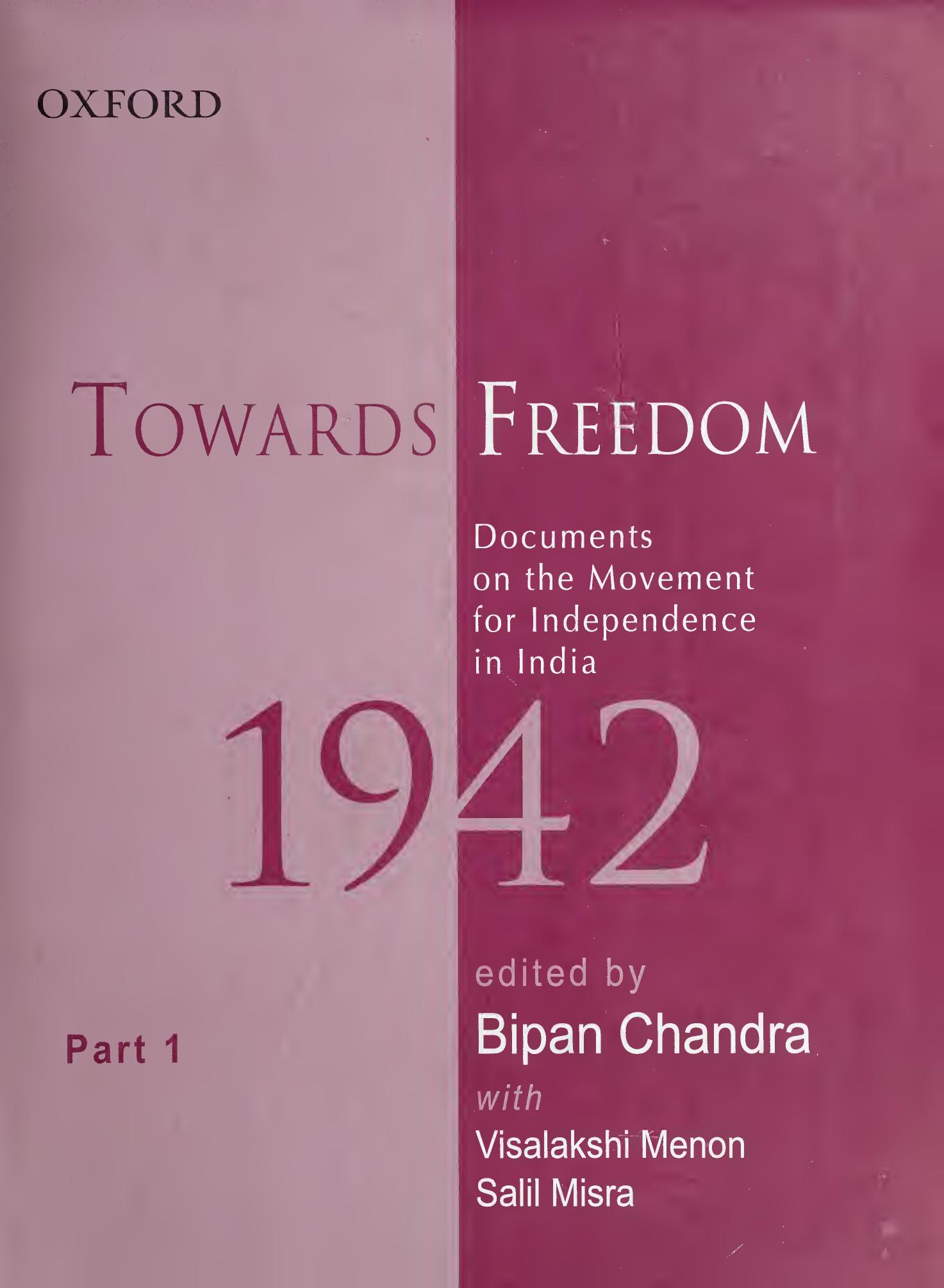
Towards Freedom : Documents on the Movement for Independence in India, 1942, Part 1 PDF
Preview Towards Freedom : Documents on the Movement for Independence in India, 1942, Part 1
The Towards Freedom series is an endeavour to document the years leading to India’s Independence. It goes beyond the overtly political activities of the time and the notion of Independence as only a ‘transfer of power’. Rather, it underscores the fact that the struggle for Independence was not merely about attaining political freedom from a colonial power but also comprised efforts to seek social justice, economic empowerment and cultural autonomy. With meticulously selected historical material from 1937 to 1947, the volumes of the series bring to the fore the activities, attitudes and ideas of diverse sections of Indian society.
The year 1942 was a defining one in India’s history. By the end of the year the equation between Britain and India had irreversibly changed. As Jawaharlal Nehru put it later, the ‘iron had entered the souls’ of the Indian people. The mass movement long awaited by many finally took place in August 1942 and, contrary to the expectations of the British government, it evoked an overwhelming response. This volume, published in two parts, covers the major socio-political processes of this momentous year.
Bringing together primary sources and archival documents from January 1942 to August 1942, Part 1 of this volume explores the emergence of the Quit India Movement. The documents here cover the period from the Bardoli Congress to the Allahabad Congress and trace the beginnings of the movement. It includes all significant topics such as the Cripps Mission; student politics; Indian political formations for example, the Communists, the Kisan Sabha, the Congress Socialist Party, the Forward Bloc and the Radical Democratic Party as also women and Dalit organizations; and the emerging communal problem. The result is a compelling narrative unravelling a rather nuanced context, in which the Congress hardly appears to be a body that could be steering a movement as powerful as the one of 1942. The shifting logic of popular pressures and how these impacted high politics is borne out clearly in this fresh narrative.
